Celebrating short-term ratings success and securing long-term brand stability is tough. The best program directors can juggle them both, by finding the right balance.
The Worldwide Radio Summit 2013 challenged a panel of established marketing experts and radio programmers to define what makes a great brand. Learn about “attitude + emotion = vibe” – and other formulas for successful radio branding, specifically for PPM markets. “Social media is the best new tool, but it’s definitely a double-edged story.”
“Every minute of the day,
you’re being evaluated”
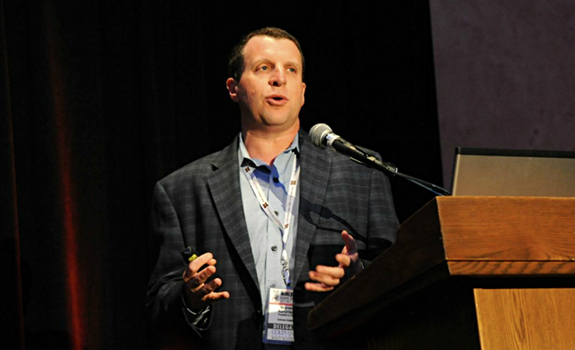
Radio consultant (and session host) Warren Kurtzman knows that radio stations in PPM markets have to think of both long-term station branding and minute-by-minute listener experience at the same time (photo: KC Morse)
Cover Image Pyramid℠ aspects
While radio people know there are differences between KIIS, AMP, and Power, radio listeners see it from a more simple perspective. Coleman Insights has researched what successful radio brands have in common and developed their Image Pyramid℠ to put them in order of influence. First and foremost, people think of a station’s basic image (like the ‘Country’ or ‘Alternative’ station). This is the foundation that makes half of the entire image. Next in line are a station’s personalities, contests and community involvement (in that order). “It’s not just enough to be associated with these things, you also have to see if they resonate with listeners”, according to company president and session host Warren Kurtzman. He makes clear that emotional connection makes all the difference. “The idea of having a strong brand versus a weak brand [still applies], even since PPM measurement has come into many markets.”
 Check brand & content filters
Check brand & content filters
Portable People Meter created a new dimension, though: “It’s no longer just about having a great brand, it’s also about delivering a great experience for the listener in the moment. Every minute of the day, you’re being evaluated.” Coleman Insight’s advice for programmers is to use both a brand filter and content filter for everything that goes on the air. In order words, finding the way to the upper right corner of the brand-content matrix.
Fulfill brand expectations consistently
“There are things that might be great for your brand, but can undermine the listener experience in the short term – or the other way around. Those are the tough decisions that programmers have to make”, Kurtzman continues. “If I was running a Whole Foods store and I wanted to improve the performance based on revenue, I could put a couple of coolers by all the check-out counters and fill them with diet coke. I would probably generate a lot of sales, and the in-the-moment performance would improve – but people don’t go to Whole Foods to get diet coke, and doing so could actually undermine the brand.” So what are the key ingredients of a great (radio) brand?
“A brand is useless
without a relationship”
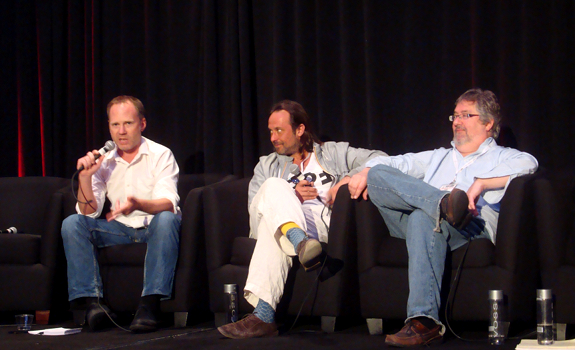
Radio programmer Andrew Jeffries (sitting on the left) envisions great brands as great connectors who create engaging experiences that bring (multiple generations of) loyal followers together (photo: Thomas Giger)
Connect consumers, remain relevant
“I look at a brand like a friend. A brand is useless without a relationship”, says Clear Channel Los Angeles group program director Andrew Jeffries. A good example he’s using, is Lego. It’s educational, creative and fun, and brings people of different generations together. It’s also timeless and consistent as Legos bought decades ago remain their quality, and older and newer parts are still compatible. The creators of Lego stay true to core values but keep evolving the brand by adding new themes, such as Star Wars and Harry Potter, or a new product line aimed at girls – which increased the company’s turnover significantly. “That’s a unique way of looking how you take a brand and turn it into something that means something.”
 Become top of mind
Become top of mind
Mohammed Al Mulhem, new business manager audio & music at the United Arab Emirates’ MBC Group reminds us that great brands own a product category by being top of mind with the consumer. “If you say: tissues, you say: Kleenex. You’ll remember only number 1; not number 2 or 3.” [See also our article based on the ideas of Al Ries & Jack Trout: Radio Station Brand Positioning: Existing Perception Is Reality].
Avoid talking about yourself
“Empathy and understanding of the customer is the most important thing for a great brand”, according to president Alan Burns of Alan Burns & Associates. His impression is that 30% of all stations are doing “a pretty decent job”, while 70% “just play a bunch or records” as they make the mistake to mostly talk about themselves and fail to focus marketing efforts on the audience. Paige Neinaber, president of CPR Promotions, thinks that a great radio brand is immediately associated with its position or market, even if it isn’t mentioned on the air at the moment of listening. “You have so many radio stations now that could just be anywhere.” He also thinks that great brands have a vibe, which is based on a simple formula: “Attitude plus emotion equals vibe.”
“Become part of the aspirational
wants and needs of the consumer”
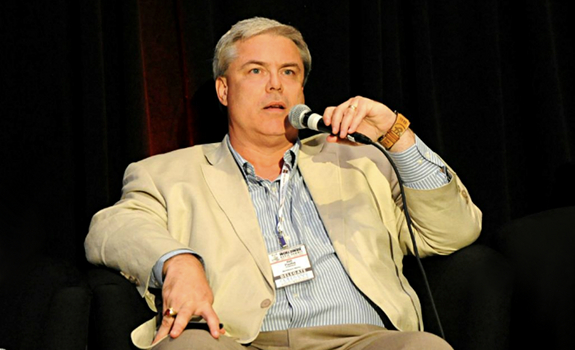
Branding expert Bill Pasha has found that radio stations can improve their image by associating themselves with hard-to-get products from by high-end brands – so they reflect on the station’s brand (photo: KC Morse)
Produce more than radio
Program director Markus Kühn (photo below) of German online station FluxFM feels that radio (branding) in his country is pretty dull. “Most radio stations are exchangeable; they sound the same everywhere… They all play the best music of the 80s, 90s and today, and they all have the same news.” He explains that’s the reason why FluxFM tries to show some attitude and have a strong stationality. “That allows you to become a brand – and to extend your brand to different things than radio as well.”
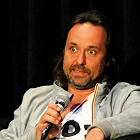 Raise above a commodity
Raise above a commodity
Andrew Jeffries adds a good point. While many stations have a professional on-air sound through great jingles and imaging, many of them make a mistake – they only tell people what they want them to know. “Great brands don’t do that; great brands give you an experience.” There are also other factors that can make the difference between being an average commodity and creating something that means a lot more to people.
Become an aspirational brand
Bill Pasha, president of MultiBrand Media International, mentions a marketing strategy where you let the image of aspirational brands shine on your radio station. Inspired by a retailer who successfully attaches his name to premium brands, from Audi cars to 5-star hotels, he and his team are now using this technique for their clients. “We find out what the most aspirational things are that the audience wants and package them together on one radio station. It’s amazing when you become part of the aspirational wants and needs of the consumer.” [He probably refers to major promotions where radio stations offer listeners a chance to win prizes that are far outside their reach, and that they can’t get anywhere else.]
“Great radio stations
always have their radar up”
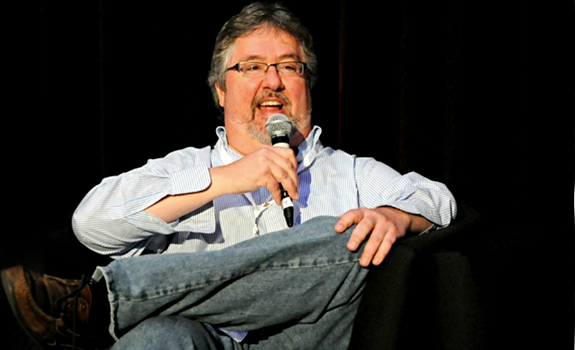
Radio promotions expert Paige Neinaber points out the importance of community involvement (photo: KC Morse)
Make social interaction 100%
“Social media is the best new tool, but it’s definitely a double-edged story. You can really undermine yourself”, Alan Burns warns. Recent research by Jacobs Media [I can recommend their blog] shows that almost 2/3rd of American radio listeners has been trained to not expect a reply when they reach out to a station online. It makes clear that radio can do a much better job to engage listeners by monitoring own social media channels and promptly reply to people’s comments and questions. Paige Neinaber is testing speed and quality of social media engagement by client stations (and their competitors) in a simple, effective way: “I have fake Facebook personas and I’ll reach out to them, like: ‘Hey – I have just moved to LA. When is Wango Tango gonna’ be?’ I had about 33 percent replies, which is inexcusable.”
 Be consistent, personal & creative
Be consistent, personal & creative
What else can stations with low marketing budgets do to build their brand, besides using social media – the right way? Alan Burns puts consistency first, as everything on the air should always represent the brand completely and in the same way. He mentions personality (“one of the biggest components of branding and bonding in radio”) and creativity as well. “The less money you have, the more desperately creative you have to be.”
Respond to community events
Paige Neinaber has learned that localness is another great way of creating a popular radio brand. “Be hyper aware of opportunities in your community that you can jump on.” Legendary Top 40 KDWB in Minneapolis is known for major promotions and big giveaways, but got a really huge audience response when they ‘flipped format’ to K-JABS – including a different website and different on-air imaging – all for a good cause. It was a fundraiser for local hockey player Jack Jablonski, who had become paralyzed after an accident. “For one day, they acknowledged the number 1 story in the state of Minnesota”, Neinaber remembers, advising PDs to “witness everything. Great radio stations always have their radar up.”
“We’re somewhat rebounding
from an initial overreaction to PPM”
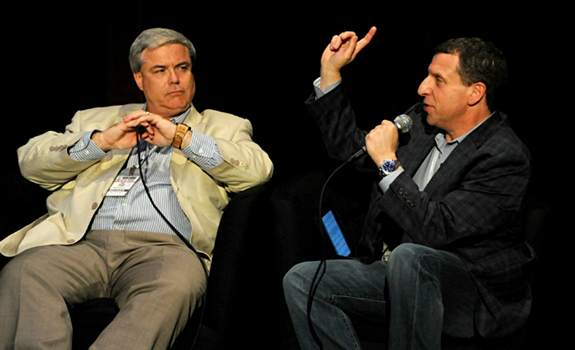
Marketing consultant Bill Pasha (sitting on the left) has the impression that American stations in PPM markets are rediscovering the value of what might be their greatest asset, which is obviously their brand (photo: KC Morse)
Stimulate sales & programming teamwork
Andrew Jeffries states that “sales isn’t evil” and is suggesting that programmers and salespeople might be able to join hands more often. Radio people should think positive about sponsors and advertisers: “We’ve got fantastic clients who are an important part of our brands. Look at them like friends; don’t look at them like third-class citizens who are taking airtime in between the ‘important’ things. They’re just as important as anything else your radio station.” In his opinion there’s a lot of potential for partnerships between programming and sales & advertisers.
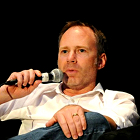 Analyze PPM data carefully
Analyze PPM data carefully
How is radio dealing with PPM (in terms of short-term listener experiences vs. long-term brand building) today? According to Jeffries, PPM has made radio better in many ways, but it’s also easy to misinterpret information. He advises to be cautious with conclusions about single moments where individual panelists tune out. “You’re assuming they left because of the thing you were doing at that time. It may have nothing to do with that.”
Protect your brand asset
“I think we’re somewhat rebounding from an initial overreaction to PPM”, Bill Pasha sees in the US. He remembers that not long after PPM came to New York, 106.7 Lite FM dropped ‘Lite’ for a while, even though that’s the core of their brand. [They might have assumed that they didn’t had to mention it anymore as the ratings weren’t based on people’s recall to fill in the diaries any longer – forgetting you need to maintain brand awareness to stay top of mind as your audience’s first choice when they turn on the radio.] Paige Neinaber puts it this way: “If radio owned the number 1 restaurant in Los Angeles and the LA Times hired a new food critic, we’d change the menu.”
”Steal from them”

The international radio industry might be able to learn a lot from top multinational brands (image: Dreamstime )
Let brands inspire you
A question from the audience is how to stay current on the best practices of brand building. “I live a life”, says Andrew Jeffries. “I go out; experience things with my wife. We look at products and decide what things we need for our family.” He then asks himself questions like: “Why does a brand make me feel that way; why do I like this product more than that one?” Jeffries then checks whether his perception of the brand matches with what they want to make him think about the brand. Bill Pasha adds that how radio engages listeners is actually very similar to how brands cater consumers. “Steal from them. Everyone in radio can benefit from looking how the top brands do it, and replicate it.”





Pleasure, Antal! Thanks for your comment.
Thomas
Thank you, Thomas, for this very good summary!
Yes: sales & programming together provide the BUSINESS results! Nail this… :-)
Best,
Antal